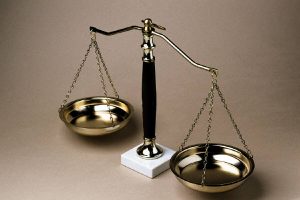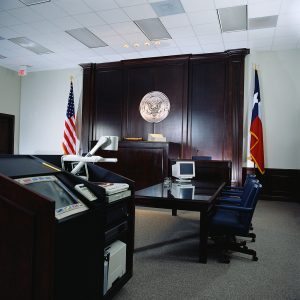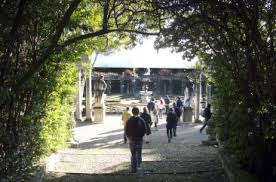Inside Higher Ed recently reported a situation involving Western Michigan University (WMU). According to published reports, WMU placed a suicidal student on involuntary medical leave. The student appealed his dismissal and filed a complaint with the Office for Civil Rights (“OCR”). The student was readmitted, but he later committed suicide in his apartment, where he was found by his roommate. At present, a debate is raging around this situation. Some hail the fact that the student won the right to return to campus as a victory for emotionally distressed students. Others see this as an example of the tragedy that may flow from OCR’s push to require colleges and universities to allow students to remain on campus after they are no longer well enough to be there. Administrators are caught in the unenviable middle. The issue of what to do in response to suicidal students is anything but a clear one. This was not always the case. Over the course of several years, OCR had developed a fairly clear line of cases on this issue, and OCR generally supported involuntary withdrawals where students presented a direct threat to themselves or others. OCR laid out various procedural “due process” steps and considerations to be met in these situations, which boiled down to notice of the intent to remove the student, an opportunity for the student to respond, and an individualized inquiry into the facts and circumstances of each case. Most colleges and universities drafted policies incorporating those procedural steps and considerations. The present uncertainty exists as a result of a change to the regulations for Title II of the Americans with Disabilities Act (ADA). In September 2010, the Department of Justice (DOJ) revised the Title II regulations, and, in particular, with respect to when a student was a “direct threat” such that the student was not otherwise qualified to remain enrolled. The DOJ’s new direct threat definition is “a significant risk to the health or safety of others” (emphasis added). That is, DOJ did not include an individual’s threat to self as part of the direct threat analysis. The Title II regulations were announced in September 2010 and became effective in March 2011. Title II applies to public universities, not private universities. Private universities are covered by Title III of the ADA, but OCR seems to be moving toward using the same direct threat analysis -- one that no longer considers a student’s threat to himself/herself -- for private universities as well. OCR has not announced a formal renunciation of its earlier line of cases, and it has been assumed for some time that OCR will provide official guidance to clear up this confusion. To date, that has not happened. The unfortunate reality is that administrators are in the position of having to “pick your lawsuit”. A decision to involuntarily remove a suicidal student may result in a discrimination claim. Of course, if a student commits suicide on campus, the institution runs the risk of wrongful death or negligence claims, not only from the student’s estate but from other students traumatized or even physically injured in the event. Beyond the legal risks, there are bedeviling educational and ethical questions that go to the balance between the interests of the mentally ill student and the interests of the learning community as a whole. That elusive “right thing to do” depends on the unique circumstances of each situation. With that said, the following are universally helpful factors to bear in mind.
(1) Be certain to consider each situation on an individualized basis, taking into account the student’s behavior on campus, the opinions of campus mental health professionals, and the resources available short of an involuntary leave that may allow the student to remain safely enrolled.
(2) If a leave of absence is in order, it is always best that the student leave voluntarily -- truly voluntarily (not threatened into a voluntary leave). This is always the safer route, from a liability standpoint.
(3) If the student is to be removed involuntarily, consider whether there are facts to be cited demonstrating the student’s threat to “others” as well as to “self”. The student’s removal should be based on these larger community-type factors in addition to any expressed or anticipated harm to self.
(4) Ensure that leave policies do not treat removals for psychological reasons more harshly than removals for other reasons. If a readmission policy is more onerous for psychological leaves versus other leaves, OCR may find the policies discriminatory on this basis alone. If an institution requires “proof” that a psychological condition has been addressed before readmitting a student, it should require some kind of similar “proof” from students who required leaves for other reasons -- whether general medical reasons, finances, family commitments, and so on -- that the circumstances that necessitated these non-psychological leaves have been dealt with as well.
(5) Be sure the institution’s policies reflect its sense of the appropriate balance of the legal, educational and ethical concerns these situations present. Once that balance is decided upon, the institution must follow its policies carefully and precisely with respect to each troubled student. OCR is highly attentive to an institution’s compliance or lack thereof with its own published policies.
There will no doubt be further legal developments and continued academic debate around these very difficult situations. In the meantime, administrators should work closely with legal counsel to navigate the best path forward for their particular institution.
 Earlier this month, Judge Leonard Wexler of the Eastern District of New York, in Saliba v. Five Towns College, 2014 WL 92690 (E.D.N.Y. 2014),[1] held that the Plaintiff essentially complained her way out of a Title VII retaliation claim. The Plaintiff was an Assistant Professor of English at Five Towns College. She alleged she was terminated for complaining about: sexual harassment committed by another faculty member against students; illegal drug use; campus security issues; and “rampant corruption” in the administration of the College. In granting the College’s motion to dismiss the complaint, Judge Wexler held that to the extent Plaintiff’s Title VII retaliation claim was predicated on her complaints about students being harassed, as a matter of law, such complaints did not constitute “protected activity.” Title VII does not cover complaints about “non-employees,” such as students, being subjected to discrimination. Additionally, Judge Wexler held that because Plaintiff complained about so many different aspects of the College’s operations that had nothing to do with discrimination, her complaint failed as a matter of law. Citing the most recent Supreme Court decision on point, Judge Wexler held that Plaintiff was require to show that her protected activity was a “but-for” cause of her termination, not just a motivating factor. In this case, however, Plaintiffs complaints were not about an employee being the victim of discrimination, but were rather about matters completely outside the scope of the anti-discrimination laws. In light of Saliba, employers facing retaliation claims would be well-served to carefully examine the precise nature of the alleged protected activity and to scrutinize whether such activity was the “but-for” cause of the adverse employment action.
Earlier this month, Judge Leonard Wexler of the Eastern District of New York, in Saliba v. Five Towns College, 2014 WL 92690 (E.D.N.Y. 2014),[1] held that the Plaintiff essentially complained her way out of a Title VII retaliation claim. The Plaintiff was an Assistant Professor of English at Five Towns College. She alleged she was terminated for complaining about: sexual harassment committed by another faculty member against students; illegal drug use; campus security issues; and “rampant corruption” in the administration of the College. In granting the College’s motion to dismiss the complaint, Judge Wexler held that to the extent Plaintiff’s Title VII retaliation claim was predicated on her complaints about students being harassed, as a matter of law, such complaints did not constitute “protected activity.” Title VII does not cover complaints about “non-employees,” such as students, being subjected to discrimination. Additionally, Judge Wexler held that because Plaintiff complained about so many different aspects of the College’s operations that had nothing to do with discrimination, her complaint failed as a matter of law. Citing the most recent Supreme Court decision on point, Judge Wexler held that Plaintiff was require to show that her protected activity was a “but-for” cause of her termination, not just a motivating factor. In this case, however, Plaintiffs complaints were not about an employee being the victim of discrimination, but were rather about matters completely outside the scope of the anti-discrimination laws. In light of Saliba, employers facing retaliation claims would be well-served to carefully examine the precise nature of the alleged protected activity and to scrutinize whether such activity was the “but-for” cause of the adverse employment action.

 With students, faculty and other groups increasingly vocal about institutional responses to campus rape and sexual assault, President Obama has announced the creation of The White House Task Force on Protecting Students from Sexual Assault. The group will include cabinet level leaders and US Attorney General Eric Holder. Under Title IX, colleges and universities are required to respond promptly to reports of campus rape and sexual assault. An increasing number of students have filed federal claims of sex discrimination, alleging that their institution had not adequately responded in cases where they have been sexually assaulted. At the same time, many college administrators have expressed frustration with the US Education Department’s Office for Civil Rights, finding that OCR does not fully understand the realities involved in addressing sexual assault on campuses, particularly when it comes to the student disciplinary process, and that there is confusion regarding exactly what OCR expects of them. The President has charged the Task Force with developing “best practices” for preventing and responding to rape and sexual assaults; to assure compliance with existing federal laws governing colleges; and to make available to the public individual college’s compliance with these laws. The President also asked the Task Force to improve coordination among federal agencies dealing with this issue, and to increase the transparency of federal enforcement efforts. In announcing the Task Force, the President indicated that the Task Force will look for ways to work collaboratively with colleges to develop these recommendations, though the Task Force will not include any members of the higher education community. The Task Force’s recommendations are to be submitted to the President in 90 days, and a full report on implementing those recommendations is due in one year. Bond will be following closely the work of the Task Force, and will keep clients updated on developments.
With students, faculty and other groups increasingly vocal about institutional responses to campus rape and sexual assault, President Obama has announced the creation of The White House Task Force on Protecting Students from Sexual Assault. The group will include cabinet level leaders and US Attorney General Eric Holder. Under Title IX, colleges and universities are required to respond promptly to reports of campus rape and sexual assault. An increasing number of students have filed federal claims of sex discrimination, alleging that their institution had not adequately responded in cases where they have been sexually assaulted. At the same time, many college administrators have expressed frustration with the US Education Department’s Office for Civil Rights, finding that OCR does not fully understand the realities involved in addressing sexual assault on campuses, particularly when it comes to the student disciplinary process, and that there is confusion regarding exactly what OCR expects of them. The President has charged the Task Force with developing “best practices” for preventing and responding to rape and sexual assaults; to assure compliance with existing federal laws governing colleges; and to make available to the public individual college’s compliance with these laws. The President also asked the Task Force to improve coordination among federal agencies dealing with this issue, and to increase the transparency of federal enforcement efforts. In announcing the Task Force, the President indicated that the Task Force will look for ways to work collaboratively with colleges to develop these recommendations, though the Task Force will not include any members of the higher education community. The Task Force’s recommendations are to be submitted to the President in 90 days, and a full report on implementing those recommendations is due in one year. Bond will be following closely the work of the Task Force, and will keep clients updated on developments. Following the lead of North Carolina last year, members of the Virginia legislature have become the latest to propose
Following the lead of North Carolina last year, members of the Virginia legislature have become the latest to propose  The turn of the calendar to a new year provides an opportunity for New York colleges and universities to perform an early assessment of their compliance with Article 129-A of the New York State Education Law in anticipation of the need to furnish evidence of compliance to the New York State Education Department (NYSED) during the summer of 2014. By way of background,
The turn of the calendar to a new year provides an opportunity for New York colleges and universities to perform an early assessment of their compliance with Article 129-A of the New York State Education Law in anticipation of the need to furnish evidence of compliance to the New York State Education Department (NYSED) during the summer of 2014. By way of background, In the past three years, there has been considerable activity on the Title IX/Sexual Assault legal front. We have all
In the past three years, there has been considerable activity on the Title IX/Sexual Assault legal front. We have all  orically, the Department of Education had interpreted all provisions of Title IV of the Higher Education Act (which authorizes federal student aid programs) consistent with Section 3 of the Defense of Marriage Act (“DOMA”), which prohibited federal agencies from recognizing same-sex marriages. As a result of
orically, the Department of Education had interpreted all provisions of Title IV of the Higher Education Act (which authorizes federal student aid programs) consistent with Section 3 of the Defense of Marriage Act (“DOMA”), which prohibited federal agencies from recognizing same-sex marriages. As a result of